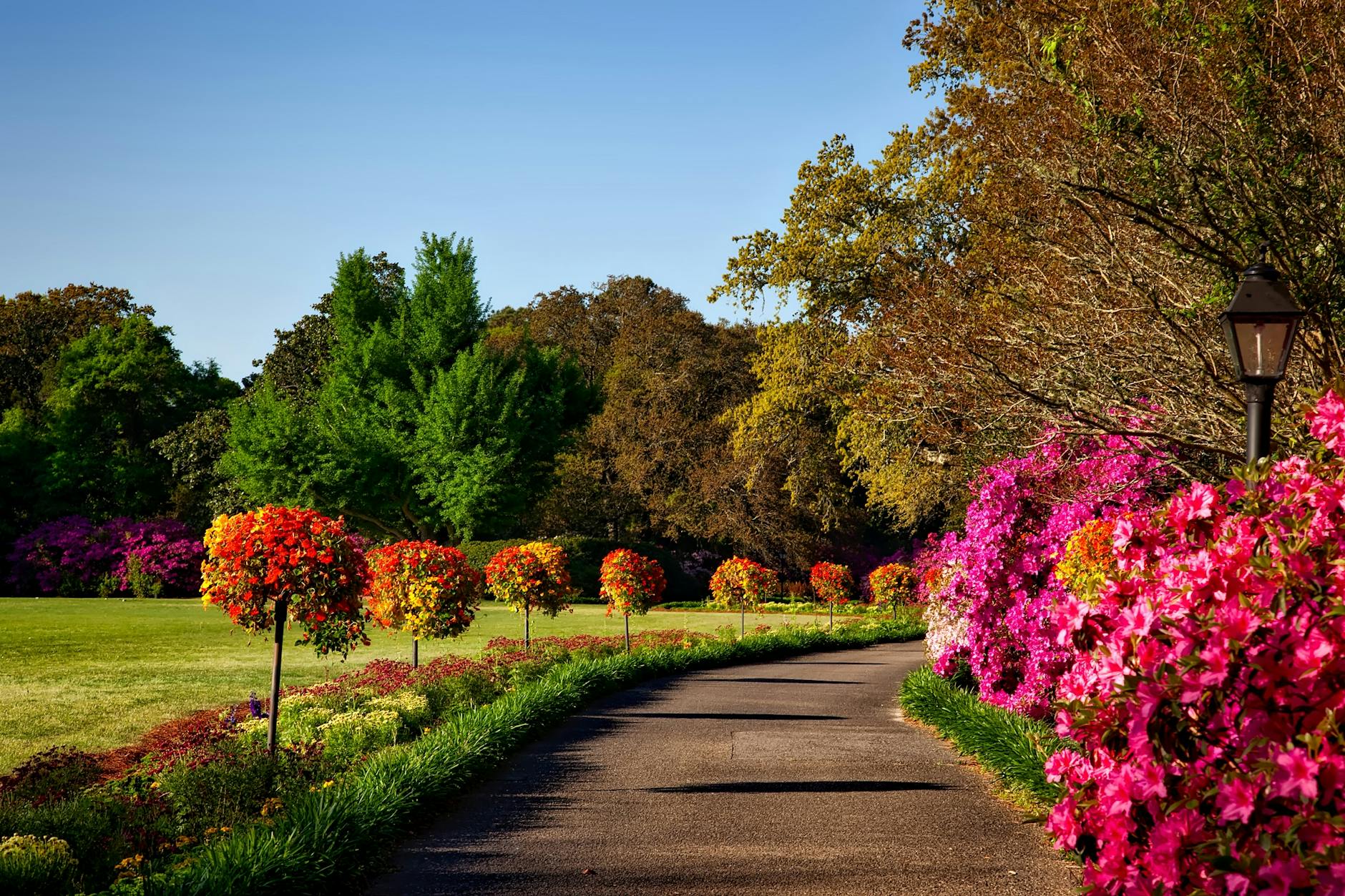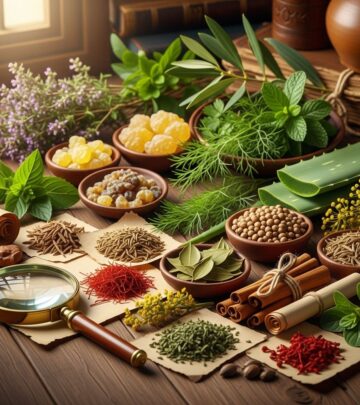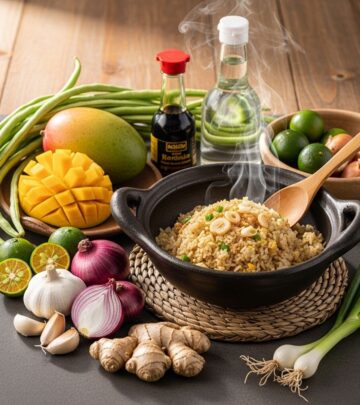Best Flowers For Country Garden: 86 Beautiful Varieties To Try
Transform your outdoor space with these stunning annuals, perennials, and flowering shrubs

86 Beautiful Flower Types to Enhance Your Country Garden
Whether you’re an experienced gardener or just beginning your journey into the world of horticulture, incorporating a variety of flowers into your country garden can transform your outdoor space into a vibrant paradise. From delicate spring blooms to hardy summer perennials and fascinating fall flowers, this comprehensive guide will introduce you to 86 stunning flower varieties that deserve a place in your garden landscape.
With detailed information on bloom times, growing requirements, and the unique characteristics that make each flower special, you’ll be equipped to create a garden that offers continuous color and interest throughout the growing seasons. Let’s explore these beautiful blooms that can enhance your country garden’s charm and appeal.
Spring-Blooming Favorites
As winter fades away, these early bloomers bring much-needed color and life to the garden, announcing the arrival of the growing season with their cheerful presence.
Forget-Me-Not Flower
When it blooms: Spring
Why we love it: These charming flowers with their delicate pink, white, or blue blooms create a magical carpet-like effect when planted at the front of borders. Their small but abundant five-petaled blooms offer a soft, whimsical touch to any garden setting. For environmentally conscious gardeners, it’s best to plant one of the native species, including Myosotis alpestris, laxa, macrosperma, or verna.
If you’re considering the non-native species Myosotis sylvatica, it’s advisable to plant it in containers or diligently deadhead before it seeds, as this particular variety is classified as invasive in several states. With proper management, however, forget-me-nots can bring enchanting beauty to spring gardens year after year.
Tulips
When they bloom: Early to late spring
Why we love them: These iconic spring bloomers offer incredible variety in terms of color, form, and height. From the classic cup-shaped varieties to fringed, parrot, and double-flowered forms, tulips provide endless possibilities for spring garden design. Plant bulbs in fall for a spectacular spring showing, and consider layering different varieties for an extended bloom season from early to late spring.
Daffodils
When they bloom: Early to mid-spring
Why we love them: Nothing announces spring quite like the bright yellow trumpets of daffodils nodding in the breeze. These reliable perennial bulbs naturalize well and return year after year with minimal care. Best of all, they’re deer and rodent resistant due to the toxic compounds they contain, making them a practical choice for country gardens where wildlife is abundant.
Early Summer Stunners
As spring transitions to summer, these beautiful blooms take center stage in the garden, providing rich color and texture during the early summer months.
Lupine
When they bloom: Late spring to early summer
Why we love them: The tall, architectural spikes of lupines create dramatic vertical interest in garden borders. With their distinctive palm-shaped leaves and densely packed flower spires in shades of purple, pink, blue, yellow, and white, lupines make a bold statement. These flowers naturalize readily, meaning your initial planting will multiply over time, creating impressive drifts of color. For best visual impact, position lupines toward the back of borders where their height can serve as a beautiful backdrop for shorter plants.
Clematis
When it blooms: Spring to late summer
Why we love it: Clematis is the queen of flowering vines, perfect for adding vertical interest to garden structures like fences, arbors, and lamp posts. With their star-shaped blooms in a spectrum of colors from deep purples and blues to pinks, reds, and whites, clematis varieties can complement any garden color scheme. Gardeners should note that patience is key with this perennial—clematis typically takes several years to become fully established and reach its flowering potential. Once established, however, these vines provide spectacular displays that improve with each passing year.
Summer Bloomers
When summer heat is in full swing, these resilient and colorful flowers thrive, bringing energy and vibrancy to country gardens.
Lavender
When it blooms: Summer
Why we love it: This Mediterranean native offers so much more than just beautiful purple flower spikes. Lavender’s intensely aromatic foliage and flowers make it a sensory delight, while its silvery-green foliage provides excellent contrast to other garden plants. For maximum impact, plant lavender in large swaths where its fragrance can be fully appreciated and its drought-tolerant nature can shine. Garden success depends on selecting varieties suited to your regional climate, as some lavenders are more cold-hardy than others.
Nasturtium
When they bloom: Summer
Why we love them: Nasturtiums bring a fiery palette of oranges, reds, and yellows to the summer garden, along with salmon and hot pink varieties that add wonderful warmth. These easy-growing annuals offer multiple uses beyond ornamental value—both their round, lily pad-like leaves and their blossoms are edible, with a pleasant peppery flavor that makes them perfect for garnishing salads or decorating cakes and other culinary creations. Nasturtiums perform beautifully in containers, as ground covers, or tumbling over walls, making them versatile additions to any country garden.
Rudbeckia
When they bloom: Summer through early fall
Why we love them: Often known as black-eyed Susans, rudbeckias are hardy native flowers that bring cheerful golden-yellow blooms to the summer garden. Growing to heights of 2 to 3 feet, they create magnificent displays when planted in masses, and their strong stems make them excellent cut flowers for arrangements. These resilient perennials prefer full sun and well-drained soil, thriving in USDA hardiness zones 3 to 7. Their daisy-like flowers with dark centers attract butterflies and other beneficial pollinators, adding ecological value to their ornamental appeal.
Campanula
When they bloom: Early to mid-summer
Why we love them: Also known as bellflowers, campanulas enchant with their delicate, bell-shaped blooms that add a fairy-tale quality to country gardens. This diverse genus includes over 300 species of both annuals and perennials, offering options for various garden settings. The nodding, cup-shaped flowers appear in shades of blue, purple, pink, and white, creating a whimsical atmosphere wherever they grow. Campanulas generally perform best in USDA zones 4 and above, preferring full sun exposure and well-drained soil conditions.
Late Summer and Fall Flowers
As the gardening season begins to wind down, these late bloomers ensure your country garden remains colorful and vibrant until frost arrives.
Asters
When they bloom: Late summer to fall
Why we love them: When many garden flowers are fading, asters burst onto the scene with their daisy-like blooms in purples, pinks, blues, and whites. These hardy perennials not only extend the garden’s color season but also provide crucial late-season nectar for butterflies and bees preparing for winter. Native aster varieties are particularly valuable for supporting local ecosystems while requiring minimal maintenance once established.
Dahlias
When they bloom: Mid-summer until first frost
Why we love them: Dahlias offer unparalleled diversity in form, size, and color. From dinner-plate sized blooms to pompom varieties the size of ping-pong balls, these tuber-grown plants provide endless fascination. Available in virtually every color except true blue, dahlias make exceptional cut flowers and can transform late-season gardens into spectacular showcases. In colder regions, tubers must be lifted and stored over winter, but this extra effort is richly rewarded by their magnificent blooms.
Year-Round Interest
Some garden plants offer value beyond their blooming period, providing structural interest, attractive foliage, or other desirable characteristics throughout the seasons.
Ornamental Grasses
When they show interest: Year-round, with peak visual appeal in late summer through winter
Why we love them: Ornamental grasses bring movement, texture, and sound to the garden in ways that flowers alone cannot. Their graceful forms catch the slightest breeze, creating a dynamic element in the landscape. Many varieties produce spectacular seed heads that persist through winter, catching frost and snow for breathtaking seasonal displays. From compact mounding forms to towering varieties reaching 8 feet or more, ornamental grasses complement flowering plants while providing structure during dormant seasons.
Tips for Planning Your Flower Garden
Creating a beautiful country garden filled with flowers requires some planning and consideration. Here are some essential tips to help you design a garden that blooms from spring through fall:
- Consider bloom times when selecting plants to ensure continuous color throughout the growing season
- Pay attention to plant heights and habits, positioning taller varieties toward the back of borders
- Group plants with similar water and sunlight requirements together for easier maintenance
- Incorporate native species that are adapted to your local conditions and support pollinators
- Plan for succession planting, allowing one type of flower to take over as another finishes blooming
Frequently Asked Questions About Garden Flowers
Q: How do I know which flowers will grow best in my garden?
A: The key to successful flower gardening is understanding your specific growing conditions. First, determine your USDA hardiness zone, which will guide perennial selection. Then, assess your garden’s sunlight patterns, soil type, and moisture levels. Choose flowers that match these conditions for best results. Local extension offices, garden centers, and native plant societies can provide region-specific recommendations.
Q: What’s the difference between annuals and perennials?
A: Annuals complete their life cycle in one growing season, producing seeds before dying. They typically provide abundant blooms throughout the season but must be replanted each year. Perennials live for three or more years, returning from their root systems each spring. While individual perennial varieties might have shorter bloom periods than annuals, a well-planned perennial garden can provide succession of blooms with less yearly replanting.
Q: How can I attract more pollinators to my flower garden?
A: Select a diverse range of flower shapes, sizes, and colors to appeal to different pollinator species. Include native plants that have evolved alongside local pollinators. Provide blooms throughout the growing season to offer continuous nectar and pollen sources. Avoid using pesticides that can harm beneficial insects, and consider including a water source such as a shallow dish with pebbles where insects can safely drink.
Q: What are the best flowers for cutting gardens?
A: Excellent cut flowers typically have strong stems, long vase life, and interesting colors or forms. Classic cutting garden favorites include zinnias, dahlias, cosmos, sunflowers, snapdragons, and bachelor’s buttons. Flowering shrubs like hydrangeas and perennials such as coneflowers, rudbeckia, and shasta daisies also make excellent cutting materials. Plant cutting flowers in dedicated rows for easy harvest without depleting your display gardens.
By incorporating a thoughtful selection of these 86 beautiful flower types into your country garden, you’ll create a dynamic, ever-changing landscape that brings joy and color throughout the growing season. From the first spring bulbs to the last autumn asters, each bloom contributes its unique charm to the tapestry of your garden, creating a personal paradise that reflects your gardening passion.
References
- https://www.countryliving.com/gardening/g3280/flower-pictures/
- https://www.countryliving.com/uk/seasonal-flowers-and-plants/
- https://town-n-country-living.com/cottage-flowers-to-add-to-your-garden.html
- https://www.floretflowers.com/floret-is-in-country-living/
- https://my100yearoldhome.com/country-living-magazine-magic-of-christmas/
Read full bio of Shinta











